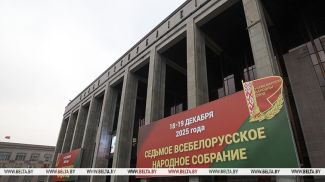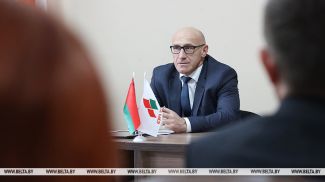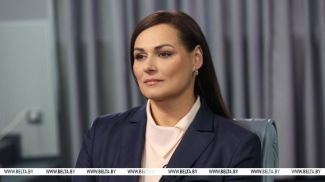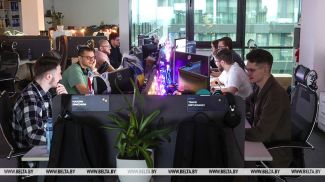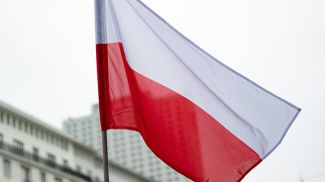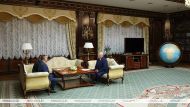
MINSK, 18 September (BelTA) – The participating countries of the International Association of Academies of Sciences intend to advance cooperation in fundamental and applied research and develop new technologies for healthcare and the real sector of the economy, BelTA learned from Chairman of the Presidium of the National Academy of Sciences of Belarus (NASB) Vladimir Karanik before a session of the IAAS Council in Minsk.
Vladimir Karanik said: “It is an association with more than 30 years of history, bringing together academic organizations and applied research centers from multiple countries. The IAAS has enormous scientific potential. The main task now is to ensure more effective interaction and the implementation of joint projects for the benefit of all countries that are members of the association. These include megascience projects, which actually discover new knowledge in the field of fundamental science, and the resolution of practical problems in the interests of the real sector of the economy. The priority is to ensure the technological security of the countries that are IAAS members. We see that the global agenda is changing, with tariffs and restrictions on access to modern technologies getting introduced. The potential of our academies of sciences allows us to secure technological sovereignty and the independent development of all critical technologies necessary for the functioning of the real sector of the economy.”

In his words, at the session the parties will discuss not only matters of deepening strategic cooperation, but also specific tactical steps. Such as the creation of a unified database of scientific knowledge and the possible publication of a specialized scientific journal where both young scientists and renowned scientists can publish their research papers. The steps also include the creation of funds to finance joint research. “In other words, there are quite many plans and tasks. Everyone understands the importance of the IAAS and strives to develop this association and fill our cooperation with real projects,“ the NASB Presidium chairman emphasized.
He dwelled separately on cooperation in the field of healthcare. “Among other things scientists work on the treatment of severe spinal injuries. Within the framework of the Union State [of Belarus and Russia] a wonderful project is available that allows children with congenital spinal disorders to return to a normal, full life. Very good R&D products and cooperation are available in the field of cell therapy of oncological diseases. We clearly recognize that combining our efforts will allow us to go down this path more quickly and effectively. If we manage to reduce the period before the practical application of the developed methods by a month or a year, it will mean thousands of lives saved,” Vladimir Karanik emphasized.



Participants of the session discussed the main results of the IAAS’ efforts and promising areas for the association’s development, the operation of the IAAS Council of Young Scientists, and the election of full members (academicians). The leaders of the academies of sciences focused on further mutually beneficial cooperation in key areas of development of modern science. Leading scientists from various countries will present scientific reports.
Since 2017 the National Academy of Sciences of Belarus has been the headquarters of the International Association of Academies of Sciences (IAAS), providing organizational and methodological support. The association unites 27 academies of sciences and major research centers from 16 countries (CIS states, China, Vietnam, Mongolia, Georgia, Cuba, and Montenegro). As many as 27 scientific councils on advanced fields of science operate within the IAAS framework. The association’s supreme governing body is the IAAS Council.






